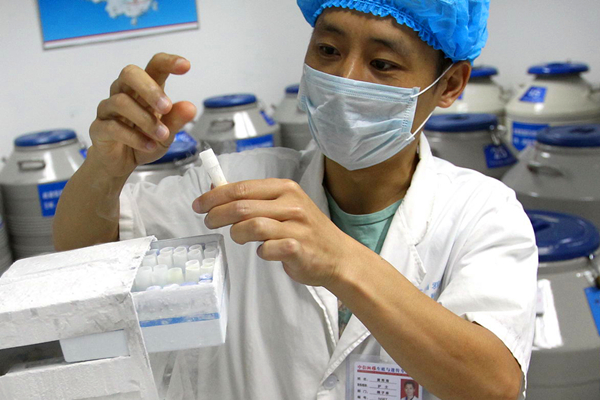 |
|
Sperm banks in China, like this one in Changsha, Hunan province, are seeing an increase in the number of visits by infertile couples. [Photo by Zhang Wei/China Daily] |
China's sperm banks are already facing a shortage of donors, and a government proposal to end the country's decades-old family planning policy may put more pressure on the institutions.
The Communist Party of China Central Committee proposed the scrapping of the current policy in late October in order to balance population growth and offset the burden of an aging population.
According to a report carried by Jiangxi Daily, a growing number of couples with fertility problems have visited local hospitals and sperm banks for consultations since the policy announcement.
Xue Jie, a head nurse with the reproductive center of the hospital affiliated with the Nanchang Research Institute of Medical Sciences, Jiangxi province, said a number of couples have come to talk to her about having a second baby with the help of sperm banks.
"Actually, there has been a rise in the number of infertile couples who have come to ask about having a second child," Xue said.
China introduced its family planning policy in the late 1970s to rein in population growth by limiting most urban couples to one child and most rural couples to two, allowing the birth of a second child if the first was a girl.
A major policy change at the end of 2013 allowed couples nationwide to have a second child if either parent is an only child. Since then, about 1.45 million Chinese couples, or 13 percent of those eligible, have submitted applications for a second child as of the end of May, according to the National Health and Family Planning Commission.
But the infertility rate is high in China, with statistics released by the China Population Association at the end of 2012 showing 40 million people have fertility issues, accounting for 12.5 percent of the population aged between 20 and 49. Many couples have turned to sperm banks for help.
Meanwhile, sperm banks are dealing with a worsening shortage of healthy sperm, despite repeated efforts to recruit more donors.
The sole sperm bank in Jiangxi, launched in 2013, has only received about 1,400 sperm donors who meet the criteria required out of more than 6,000 volunteers so far.
